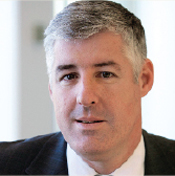
NAB CEO Cameron Clyne is the latest luminary to appeal to a lack of confidence causing Australia economic problems. According to AAP, at an American Chamber of Commerce event Clyne said:
“Part of the problem with this constant reference to two speeds is that people feel that if they are not in the express lane, they’re going backwards, which is not the case”.
He said confidence, not interest rate cuts, was the key to boosting the economy.
“Part of what’s needed to restore confidence is broadening the debate from two speeds,” he said.
Mr Clyne said talk of two speeds ignored the fact that the economy was in transition and that the changes that the economy was undergoing had happened many times in the past and would happen many times in the future.
Needless to say, this grates coming from a banker. What Clyne describes as a lack confidence I describe as rebuilding household balance sheets. The two speed economy is the result of two factors, the high dollar and the structural shift towards higher savings rates. Neither of these show a lack of confidence. One is the result of over-confidence in the Australian economy by global markets and the other is a return to patterns of saving that were suspended for a decade or more across the millennium as the banks borrowed enormous sums offshore and pumped the money into mortgages (causing a period of euphoric over-confidence).
The return to the old savings pattern is rebuilding Cameron Clyne’s bank and a little humility and gratitude is long past due.

